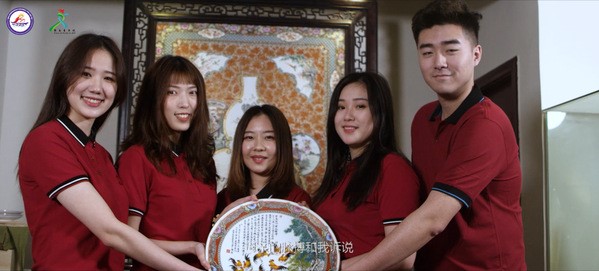- ABOUT JNU
- ADMISSION
-
ACADEMICS
- Schools and Colleges
-
Departments and Programs
- Arts College of
- Chinese Language and Culture College of
- Economics College of
- Electrical and Information Engineering College of
- Foreign Studies College of
- Information Science and Technology College of
- Environment School of
- Humanities School of
- International Business School
- International Studies School of
- Journalism and Communication College of
- Law School
- Liberal Arts College of
- Life Science and Technology College of
- Management School of
- Marxism School of
- Medicine School of
- Pharmacy College of
- Physical Education School of
- Science and Engineering College of
- Shenzhen Tourism College
- Research Institute
- Research Center
- Programs in English
- Majors
- Study Abroad
- Online Learning
- RESEARCH
- CAMPUS LIFE
- JOIN US
Latest News
JNU students learn about Canton porcelain and embroidery
Date: May 8, 2019
Source: JNU student affairs office
Author: He Dongfeng
The Chinese Traditional Culture Exploration Group composed of JNU students from Guangdong, Hong Kong, Macao and Taiwan participated in a activity regarding the inheritance of excellent Chinese culture to learn Canton onglaze decoration porcelain (Canton porcelain) and embroidery on Mar 17.
Under the guidance of teachers of JNU student affairs office, students from Shipai campus and Panyu campus visited Tan Guanghui Canton porcelain Studio and Liang Xiuling Embroidery Art Gallery. This cultural experience made they gain a firsthand appreciation for the unique charm of excellent traditional culture and learn a lot.
The Canton porcelain firing technique was listed in the national intangible cultural heritage list in 2008. The same year, Tan Guanghui, a inheritor of Canton porcelain firing technique and master of Chinese Arts and Crafts of Guangdong Province, was selected at age 57 as the National Intangible Cultural Heritage representative bearer of this technique.

(One student shared her experiences.)
Tan said that he would rather be a bearer of Canton porcelain than a protector so as to make more people know and study it. He also expected to bring Canton porcelain into ordinary consumers' life for more vitality in inheritance.
With the elaborate preparation of activity organizers, students could make their own Canton porcelain in freedom.

(Group photo)
Canton embroidery, one of Guangdong embroidery, refers to folk embroidery craft in Pearl River Delta with Guangzhou as the center. Dating from Tang dynasty, Canton embroidery has a history of more than one thousand years. And it’s full of Linnan characteristics (“Linnan area” refers to the south of Five Ridges in China.) in creation and artistic style. On May 20, 2006, Canton embroidery was listed as National Intangible Cultural Heritage with approval of state council of the People's Republic of China.
The sixth generation of Canton embroidery family, Liang Xiaoman, showed students around Liang Xiuling Embroidery Art Gallery, her family occupied in embroidery since 1938. Canton embroidery can even be half-painted and half-embroidered with a combination of traditional Chinese painting and calligraphy.
To experience this profound craft, students gave full play to their creativity with a material package the teacher prepared.

(Group photo)
Through this activity, students experienced fine traditional Chinese culture. Meanwhile, they were encouraged to become the active inheritors, spreading the excellent traditional Chinese culture to the world.
NEWS
- About the University
- Quick Links
Copyright © 2016 Jinan University. All Rights Reserved.




